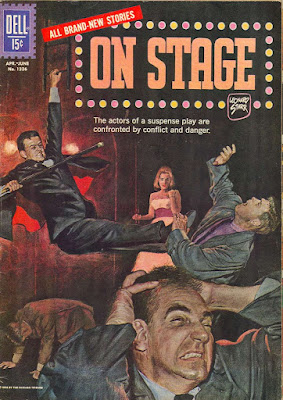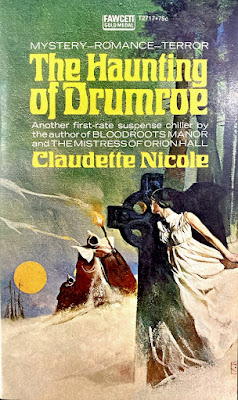With this fourteenth Ted Wilford mystery, I have reached the penultimate book in this series. I have to say, when I started reading this books, I certainly never thought I would make my way to the end of the series, but here I am, just one book away from finishing it. For the most part, the stories have been much more enjoyable than I ever expected. Sure, some have certainly been better than others, but I think I like the fact these mysteries are more cerebral and less about adventure, as most boys' series are. I also like the fact that Ted and his best friend, Nelson Morgan, have aged and matured through the stories, going from high school to college and expanding their knowledge and experience in the world of newspaper reporting. The particular story definitely took the boys in an unexpected direction, and not necessarily for the better (in my opinion).
The S.S. Shamrock Mystery opens with the boys being hired, more or less, by one Mrs. Dundee, who runs a rather successful shipping company. One of her ships, the Shamrock MI, has been having a number of small incidents happen lately that, by themselves, do not mean much, but when added all together, it raises the question of whether someone is trying to sabotage the freighter and keep it from completing its deliveries on time. Mrs. Dundee is afraid it is a competitor who is vying for some very important shipping rights, which, if she were to lose, could cost her company considerable money. Ted and Nelson readily agree to assume a new role as sailors for a few weeks during the break from college and see if they can uncover anything while on board. They are told only the captain and one crew member will know who they are and why they are really on board, so the must be discreet in their investigation.
Thus, within the first few pages of the book, author Norvan Pallas sets up the mystery that Ted and Nelson will be trying to solve. The only problem I had with the story is that Pallas gets sidetracked way too often with his descriptions of the water routes taken by the Shamrock. Not only do we get overly detailed descriptions of boating regulations in the shipping lanes, but explicitly outlined routes taken by the ship as it traverses the rivers around the Great Lakes. Harriet Stratemeyer Adams could have taken a cue from Mr. Pallas when it comes to providing readers with some real-life facts about the setting of the story. Unlike most of the other mysteries, Ted and Nelson do not take a very active role in solving this mystery. Instead, they just seem to constantly ponder the things that happen around them - the missing crew member, the boat that appears without lights in the middle of the night, the seemingly random stolen items on board the ship, the false directives given to the communications officer, and so on. Rather than taking the initiative to hunt down clues and ferret out information, they basically go over the same questions repeatedly until the answers fall in their lap!
Pallas does scatter a few obscure clues throughout the story to help the reader along, but the first three-fourths of the book reads more like a boys' adventure tale of life on the sea rather than a mystery. It is not until the final quarter of the book that things start to really come to a head, and the mystery finally moves to the forefront. At least then we start to get some excitement, as Ted and Nelson finally begin to do more than question everything and start to put the pieces together regarding the mysterious night boat, the missing crewman, and all of the other strange occurrences. There is a rather clever misdirect involving a criminal that one crew member's father is investigating, as well as some doubt regarding another crew member's real identity. The saboteur's true identity eventually comes to light, and Mrs. Dundee's ship and her contract are saved by the end (as if there were ever any doubt).
Interestingly, the scene depicted on the cover never actually occurs anywhere in the story. I'm assuming the two boys are meant to be Ted and Nelson, and if so, at no time were they watching the Shamrock from a distance when they spot to mysterious boat making its way to the bigger ship. Every time Ted saw the night boat, he was aboard the Shamrock, looking out over the water. Thus, I'm not sure why the cover artist drew the scene this way, but I suppose one can chalk it up to artistic license.
I was not overly thrilled with this story, and I hope the next, and final, book in the series gives readers a much better mystery to sign off on!
RATING: 6 tales of the Lake Superior sea serpent out of 10 for, at the very least, providing a uniquely different type of mystery for a series book like this.


















